Greetings from San Francisco where I'm back with family, back in the studio, and back to the Long View Project blog. Apologies for the less frequent updates while I settle in and await arrival of the material I collected and shipped home from Antarctica to incorporate into my artwork. It’s taking a while since the boxes are coming by sea. Once they arrive though, I look forward to sharing the creative process with you here. That process -- the actual assembly of the artwork -- will initiate the second phase of the Long View Project as described in my introductory post a couple months back. In the meanwhile, an update from where I last left off, high above Antarctica en route back to New Zealand: 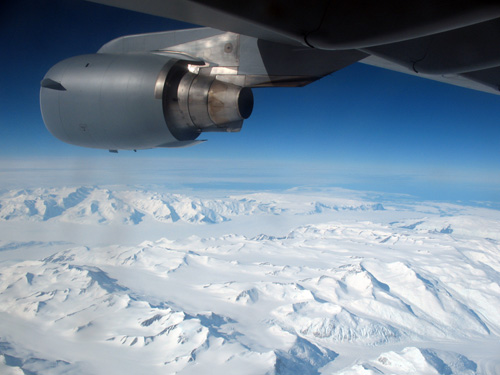 After enjoying a month of Antarctica's 24/7 summertime daylight (the better to enjoy these amazing views by)...
After enjoying a month of Antarctica's 24/7 summertime daylight (the better to enjoy these amazing views by)...  ...it felt odd to be greeted by darkness in Christchurch.
...it felt odd to be greeted by darkness in Christchurch. 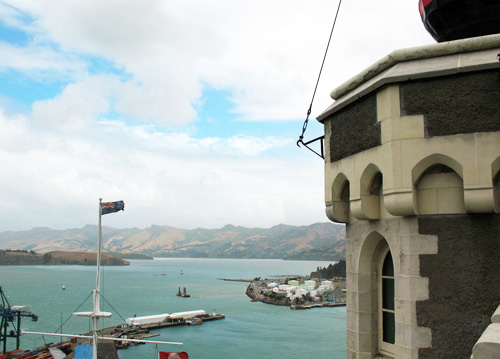 I used my first full day here to visit the nearby port of Lyttelton with fellow artist grantee Judit Hersko. Lyttelton interested us as the launching point for early 20th-century British Antarctic expeditions. This view is from the Timeball Station, an historic 1876 landmark once crucial for navigation. The castle-like structure's timeball, partially seen at the upper right of the photograph, was used to signal exact Greenwich time to the harbor's vessels until 1934 when radio signals took over.
I used my first full day here to visit the nearby port of Lyttelton with fellow artist grantee Judit Hersko. Lyttelton interested us as the launching point for early 20th-century British Antarctic expeditions. This view is from the Timeball Station, an historic 1876 landmark once crucial for navigation. The castle-like structure's timeball, partially seen at the upper right of the photograph, was used to signal exact Greenwich time to the harbor's vessels until 1934 when radio signals took over.  Beyond the pier in the center lies Quail Island where Robert Scott and Ernest Shackleton trained their sled dogs and ponies before setting off on their voyages. The island is the plug of the ancient volcano forming Lyttelton Harbor.
Beyond the pier in the center lies Quail Island where Robert Scott and Ernest Shackleton trained their sled dogs and ponies before setting off on their voyages. The island is the plug of the ancient volcano forming Lyttelton Harbor.  Down the hill on Gladstone Quay, the Lyttelton Historical Museum features local history, oceanography and, of course, Antarctic exploration exhibits. In its former incarnation as the Seamen's Institute, the building provided shelter to mariners including some of Robert Scott's Terra Nova expedition crew.
Down the hill on Gladstone Quay, the Lyttelton Historical Museum features local history, oceanography and, of course, Antarctic exploration exhibits. In its former incarnation as the Seamen's Institute, the building provided shelter to mariners including some of Robert Scott's Terra Nova expedition crew. 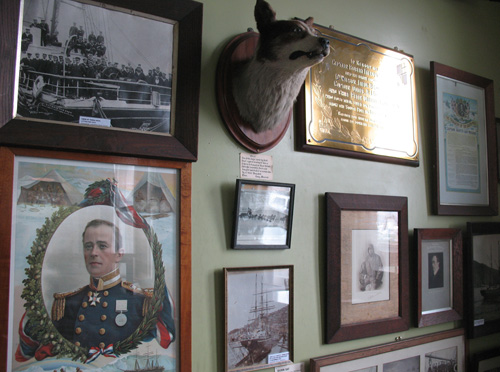 Robert Scott's dog, Deek, guards over his master, framed at lower left. Born in Siberia and trained on Quail Island, Deek was a favorite among Scott's dozens of Samoyed sledge dogs. He survived the Terra Nova expedition (which Scott himself didn't) and returned to New Zealand to live out his days as companion to the mayor of Christchurch.
Robert Scott's dog, Deek, guards over his master, framed at lower left. Born in Siberia and trained on Quail Island, Deek was a favorite among Scott's dozens of Samoyed sledge dogs. He survived the Terra Nova expedition (which Scott himself didn't) and returned to New Zealand to live out his days as companion to the mayor of Christchurch. 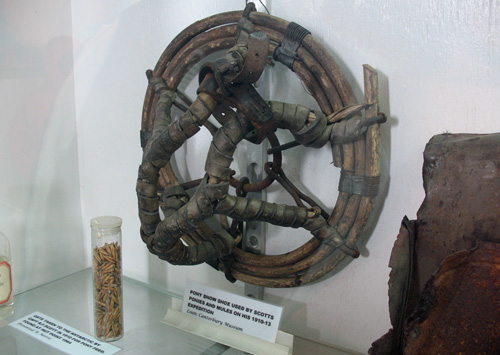 Pony snow shoes from the same expedition of 1910-13 on display with oats for feed, found at Hut Point in 1964.
Pony snow shoes from the same expedition of 1910-13 on display with oats for feed, found at Hut Point in 1964. 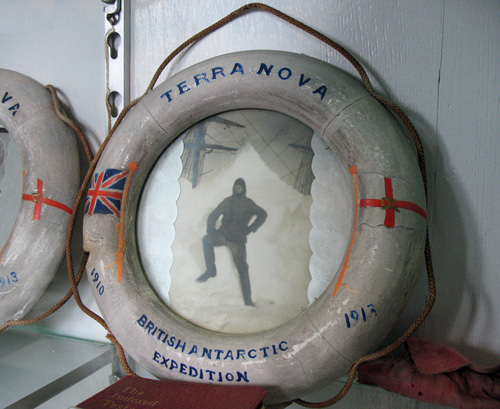 Given all the Terra Nova memorabilia on display, one could be forgiven for calling it "the Scott Museum," as one past visitor described it to me. However the Lyttleton Museum's exhibits do include artifacts from James Cook's, Ernest Shackleton's, and Richard Evelyn Byrd's exploits too. The collection was definitely worth the visit.
Given all the Terra Nova memorabilia on display, one could be forgiven for calling it "the Scott Museum," as one past visitor described it to me. However the Lyttleton Museum's exhibits do include artifacts from James Cook's, Ernest Shackleton's, and Richard Evelyn Byrd's exploits too. The collection was definitely worth the visit.  The following day I returned to Christchurch's Canterbury Museum which readers may remember from December 28 and again on the 31st. Except this time I was back by appointment specifically to see the collection's copy of Aurora Australis housed in the museum's Documentary Research Centre. This was a thrill because each of the original edition's approximately 25 hand-bound copies is unique -- notably the wooden covers cut from provisions cases. Much thanks to Natalie Cadenhead, the Canterbury's Curator of Antarctic History for showing me both this and the museum's South Polar Times collection -- an added treat. I traveled on to San Francisco the next day, having accomplished all I'd hoped to, and so much more.
The following day I returned to Christchurch's Canterbury Museum which readers may remember from December 28 and again on the 31st. Except this time I was back by appointment specifically to see the collection's copy of Aurora Australis housed in the museum's Documentary Research Centre. This was a thrill because each of the original edition's approximately 25 hand-bound copies is unique -- notably the wooden covers cut from provisions cases. Much thanks to Natalie Cadenhead, the Canterbury's Curator of Antarctic History for showing me both this and the museum's South Polar Times collection -- an added treat. I traveled on to San Francisco the next day, having accomplished all I'd hoped to, and so much more.